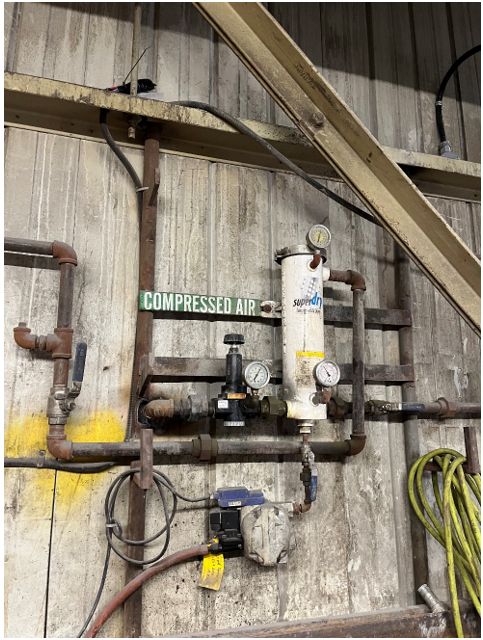It is common to see the air in a complete plant dried by a desiccant dryer only to service one small end-use that is subject to freezing temperatures. The purge from a large desiccant dryer is much more costly than that of a small point-of-use dryer, which can be placed on the outdoor feed.
The water vapor contained compressed air will condense into the compressed air pipes if the temperature of the air in the piping falls below the compressed air dew point. If the pipes are below the freezing point of water — such as in an outdoor installation in winter — then ice forms. The ice will build up and block the flow of compressed air, causing severe pressure drop, or complete blockage.

Even during cold winter days, when the ambient conditions in your compressor room are very dry, the compressed air produced by an air compressor will be at or near full saturation at room temperature. An air compressor raises the dew point of the air by compressing it to a smaller volume (about one-eighth the size), making the air less able to hold water vapor. For this reason, some sort of air dryer must be used to remove enough water vapor to keep the pipes dry.
If your system uses refrigerated air dryers, you have a problem if you have pipes exposed to very low temperatures. That is because these dryers produce compressed air with dewpoints of around 35° to 38° F (3° to 5° C). To prevent the lines from freezing, you will need secondary air drying. This application might use desiccant or membrane air dryers to produce compressed air with dew points of around -40°.
To save operating costs, it is best to secondary dry only the air that goes outside to such low dew points — rather than all the air the compressor produces (if you don’t need such dry air elsewhere in the plant). This greatly reduces the dryer operating costs. For example, a 1,000-cfm fixed-cycle heatless dryer will consume about 150 cfm, equivalent to about 33 kW of compressor power. This is worth roughly $28,000 in electrical costs per year. The single tower desiccant dryer in Fig. 1 consumes no purge (the desiccant bag must be changed each year costing $200).
Avoid using costly dryers if super dry air is not required!
Filed Under: Air Compressors, Air Preparation, Components Oil Coolers, Compressed Air Technologies, Engineering Basics, Pneumatic Tips, Technologies